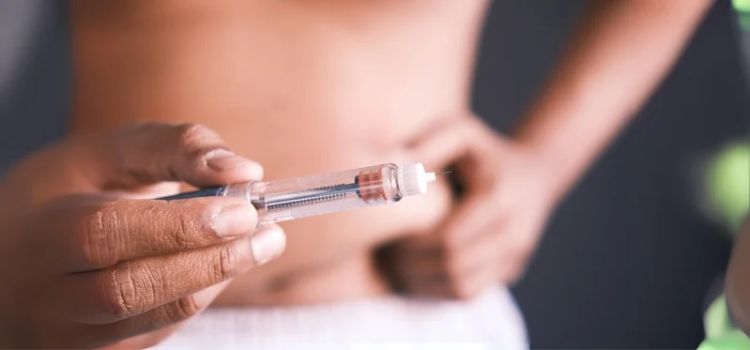Managing diabetes involves daily insulin injections for millions worldwide. It’s crucial to ensure the safe and proper administration of insulin injections. Despite precautions, the scenario of an insulin needle breaks off in the skin can occur. This raises immediate concerns and requires prompt action. It’s essential to understand proper injection techniques and safety measures to prevent such incidents.

In this article, we’ll explore the steps to take if an insulin needle breaks off the skin, providing essential guidance for managing this situation effectively and minimizing health risks. Understanding these procedures can empower individuals to handle potential emergencies with confidence and composure.
The Risk of Insulin Needle Breaks off the Skin
Factors contributing to needle breakage
Needle breakage during insulin injections can happen due to several factors. Be careful when you are using Insulin.
Potential Risks of Broken Insulin Needles
Assessment of The Situation for Broken Insulin Needle
When faced with a broken insulin needle in the skin, the initial step involves a careful assessment of the situation to determine the best course of action:
Inspecting the Skin Around the Breakage
Start by examining the area where the needle broke off. Look for any visible parts of the needle protruding from the skin. If you can see part of the needle, avoid touching or attempting to remove it yourself to prevent further injury or push it deeper. Note any bleeding, swelling, or signs of irritation around the site of breakage.
Determining if the Needle is Embedded
Assess whether the needle fragment is fully embedded in the skin or if part of it remains visible. A fully embedded needle may not be visible on the surface but can often be felt under the skin. Gently palpate the area around the breakage to locate the exact position of the needle fragment. If the needle is partially visible or if there is uncertainty about its depth, it’s crucial not to manipulate it further.
In cases where the needle is deeply embedded or if you’re unsure about its position, seek immediate medical attention. Healthcare professionals have the tools and expertise to safely remove the needle fragment and minimize the risk of complications such as infection or tissue damage.
What to do If the Insulin Needle Breaks Off in the Skin?
If an insulin needle breaks off in your skin, it can be a concerning situation for you. Here’s what you should do:
Home Remedies and Initial Care for Broken Needle
When dealing with a broken insulin needle in the skin at home, it’s essential to take immediate steps to clean the area and provide initial care. By following these steps for cleaning and initial care, you can help reduce the risk of complications and promote healing while awaiting professional medical assistance.
Steps to Clean the Area:
Applying First Aid Measures:
The Risk of Infection Broken Insulin Needle
When an insulin needle breaks off in the skin, it creates an opportunity for bacteria to enter the body, potentially leading to infection. The risk of infection depends on factors such as the cleanliness of the area, the depth of the needle fragment, and how quickly medical attention is sought. Infections can range from mild skin irritations to more serious conditions like cellulitis or abscesses.
Symptoms to Watch Out For
Conclusion
Dealing with a broken insulin needle requires quick, calm action to minimize risks and ensure proper care. Remember, do not attempt to remove the needle yourself, and seek emergency medical attention. Healthcare providers employ specialized procedures and tools for safe removal, prioritizing patient safety and comfort.
Understanding the signs of infection and monitoring the affected area is crucial for early detection and treatment. By staying proactive and following these guidelines, you can effectively manage such incidents and maintain their health and well-being in the face of unexpected challenges. Always prioritize safety and seek professional medical advice for any concerns regarding insulin injection safety.
🔗More Ecssla -Health Tips & Tricks:
- Should You Use a Face Mask Before or After Shower?
- Can Azo Affect Pregnancy Test Results? What You Need to Know
- What Clothes Should You Wear With Walking Boots? Styling Tips
- How to Use Vicks VapoPads Without a Humidifier? Creative Ways!
FAQs about Broken Insulin Needle
If the needle is not visible or protruding, avoid trying to remove it yourself. Seek immediate medical help.
Use new needles for each injection, handle them carefully, and follow proper injection techniques recommended by your healthcare provider.
Watch for redness, swelling, warmth, or drainage of pus from the site. These can point to an infection that has to be treated by a doctor.
Yes, healthcare providers have the tools and expertise to remove deeply embedded needles safely, minimizing tissue damage and infection risks.
Insulin needles should be used according to the manufacturer’s guidelines and replaced after each injection to ensure they are sharp and sterile.


Leave a Reply